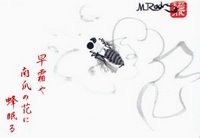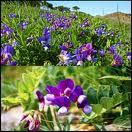:::::::::::::::::::::::::::::::::::::::::::::::::::::::::::::::::::::::::::::::::::::::::::::::::::::::
Bonifacio Day
***** Location: Philippines
***** Season: Winter
***** Category: Observance
*****************************
Explanation
Bonifacio Day, November 30.
The birthday of Andres Bonifacio (b.1896), who led the 1896 revolt against the Spanish.

Bonifacio Monument by Guillermo Tolentino
1933 cast in bronze, Kalookan City
http://www.seasite.niu.edu/Tagalog/Cynthia/festivals/bonifacio_day.htm
In August of 1896, at Pugadlawin, Kalookan, Bonifacio gathered his men and fearlessly urged them to tear up their cedulas as a symbilic gesture of their defiance of Spanish rule. Thus began, the Philippine Revolution against Spain.
A difficult childhood gave Andres the strenght to face all odds with great courage and determination. He was the eldest of six children of Catalina de Castro and Santiago Bonifacio.
At the age of fourteen, Andres was orphaned and had to taken on the task of caring for his younger brothers and sisters. To do this, he had to quit school and look for ways of supporting his family.
Together, they made rattan canes and colorful fans from Japanese paper. Even if he stopped going to school, Bonifacio continued reading the novels of Rizal and Dumas; he also read about international law and French Revolution. In later years, he too began to write about what the Filipino should know to appreciate the desire and the need to be free.
During his late teens, Andres was able to work as a clerk, then as a sales agent. later on, he became a warehouseman in Tondo.
Bonifacio and Jose Rizal were both members of La Liga Filipina, a movement working peacfully for reforms in the Philippines. However, the two national heroes never knew each other personally. When Rizal was arrested in 1892, Bonifacio realized that Spain would never grant the requested reforms. So, on the night of July 7, 1892, Bonifacio, Valentine Diaz, Deodato Arellano (brother in-law of Marcelo H. del Pilar), Teodoro Plata (Andres' brother in-law), Ladislao Diwa, and a few others secretly met in a house along Azcarraga Street (now Claro M. Recto Street) near Candelaria Street (now Elcano Street). On that night, the Katipunan was formed. The members formalized their membership by signing the pact with their own blood. In 1895, Bonifacio became the Supremo, or leader.
In the same year the Katipunan was founded, Bonifacio married Gregoria de Jesus, who chose Lakambini or muse as her codename in the Katipunan. She took charge of the confidential files, revolvers, seals, and other materials of the society.
On August 23, 1896, the katipuneros gathered secretly at the farm of Juan A. Ramos, son of Mechora Aquino, at Pugadlawin in Kalookan. The Spaniards had gotten wind of the Katipunan and deciphered its secret codes. The katipuneros are now fugitives and in great danger. Together, the katipuneros agreed to fight to the death for their cause.
"Bring out your cedulas and tear them to pieces to symbolize our determination to take up arms," Bonifacio challenged his members. The katipuneros tore up their cedulas and shouted, "Long live the Philippines." The cry at Pugadlawin signaled the start of the Philippine Revolution.
The inital plan to attack Manila did not push through due to lack of arms. Instead Bonifacio, Emilio Jacinto, and some others attacked the Spanish arsenal at San Juan del Monte. Bonifacio failed to anticipate the possible arrival of the Spanish reinforcement troops, who caused the Filipino's defeat.
Bonifacio and his men retreated with heavy casualties.
Bonifacio's life as a militant katipunero ended on Mount Hulog, a mountain in Maragondon, Cavite. Bonifacio and his younger brother Procopio were accused by the Spaniards of rebellion and were sentenced to die. On May 10, 1897, Mariano Noriel handed a sealed envelope to Lazaro Makapagal and instructed him to take the two Bonifacio brothers to Mount Taal. Once there Bonifacio requested Makapagal to open the envelope. In it was the order to execute both brothers. Makapagal had no recouse but to follow the command, lest he be punished severely. In doing so, he executed the Filipino who sprearheaded the Philippine Revolution against Spain.
Source: Filway's Philippine Almanac Centennial Edition
http://www.seasite.niu.edu/Tagalog/Cynthia/festivals/bonifacio_day.htm
xxxxxxxxxxxxxxxxxxxxxxxxxxxxx
ANDRES BONIFACIO

Founder of The Katipunan, was born to Santiago Bonifacio and Catalina de Castro, a Spanish mestiza, in Tondo, Manila on November 30, 1863 and died on May 10, 1897 at the age of 33.
To remember Andres Bonifacio on his 140th birth anniversary is to rekindle in us his ideals - Liberty, Equality, and the Brotherhood of Men - a man of action, a great organizer, an indefatigable worker, and selfless Filipino who sacrificed his life to see his beloved Motherland freed from foreign domination.
http://www.ladylaila.net/blog/archives/000029.html
xxxxxxxxxxxxxxxxxxxxxxxxxxxxx
Find the Philippines in this world map!!
And more links about the Philippines.
http://www.filipino.com/
List of other holidays in the Philippines.
http://www.shagtown.com/days/philippines.html
*****************************
Worldwide use
*****************************
Things found on the way
Haibun by Robert Wilson
even the fish
are repelled by its stench---
the pasig river
On November 30th, Filipinos will celebrate the life of AndresBonifacio, the man who led the revolution that overthrew their country'scruel, dark hearted Spanish captors. Unfortunately, the victory was shortlived.
Today, the greatest source of income for the Republic of the Philippines is money sent home by relatives working in other countries. The majority of people holding jobs in the Philippines are grossly underpaid, oftentimes receiving less than $98 per month, which is not enough to feed, house, and clothe a family. Medical insurance is out of their reach. Poverty is rampant. Preventable diseases and death, all too common. As it was before Filipinos rose up against their Spanish captors, the people are once again the captives of greed,subjugated and ruled by a privileged few who control 90% of the wealth. And thanks to graft and political corruption, their rule shows no sign of ebbing. Interestingly enough, most of the privileged are light skinned people who prefer to speak English instead of Pilippino.
They drive expensive cars, live in american style luxury homes,and celebrate American holidays. All the while, the majority ofFilipinos live below the poverty level, a poverty level poor Americanswould rise up and revolt against. Small wonder Filipinos covet foreign jobs,legal and illegal, leaving the country as fast as they can.
rise up
from the grave, bonifacio...
summer is near
robert wilson
http://groups.yahoo.com/group/WHCworldkigo/message/791
*****************************
HAIKU
dewdrops
on sampaguita blossoms...
the day Rizal died
wakasa ni namida dokuritu bannzai
tears for his youth
Long Live Independence!
Jose Rizal is the national hero of the Philippines, who died by execution on December 30, 1896.
Renga by Juanito and Sakuo
http://groups.yahoo.com/group/WHCworldkigo/message/2238
*****************************
Related words
***** Sampaguita
This is the national flower of the Philippines and belongs to the jasmine family. It
grows as a woody vine or shrub with small, white star-shaped blossoms that open at night and wilt in less than a day. Its flowers have a distinct sweet fragrance. It is believed to have been imported in the 17th century from Himalayan areas.
Read more about this flower here:
http://home.arcor.de/be/bethge/sampaguitaenglisch.htm
:::::::::::::::::::::::::::::::::::::::::::::::::::::::::::::::::::::::::::::::::::::::::::::::::::::::
[ . BACK to DARUMA MUSEUM TOP . ]
[ . BACK to WORLDKIGO . TOP . ]
:::::::::::::::::::::::::::::::::::::::::::::::::::::::::::::::::::::::::::::::::::::::::::::::::::::::









































